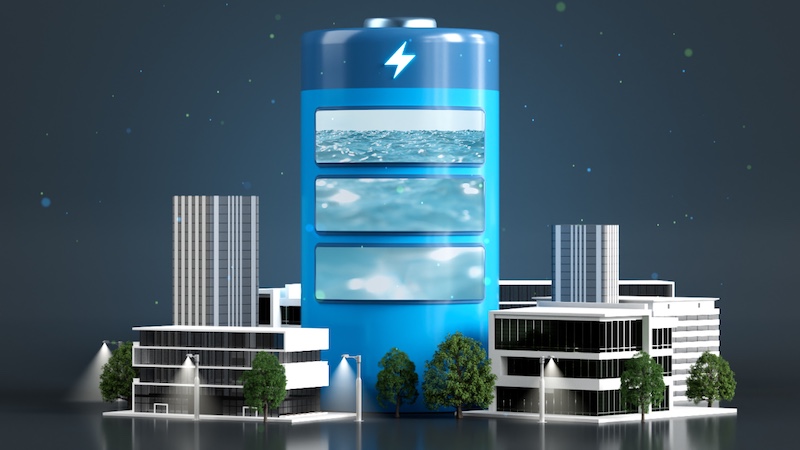Tech and energy have a complex relationship.
One the one hand, tech innovation can help energy grids and power generation become more efficient and secure. On the other, the rapid adoption and development of emerging technologies is increasing power consumption.
Cisco is approaching the issue from multiple angles. It begins with Cisco’s net-zero goals and expands to include everything from circularity and smart grids to more energy-efficient products and investments in new solutions like wave power.
Another strategy? Long-term Power Purchase Agreements (PPAs) for clean energy.
With the help of these PPAs — the most recent of which were signed in Texas and India last year, as well as in Spain in 2023 — the company looks to fully power Cisco operations carbon free, while supporting clean-energy developers, outside communities, and Cisco partners.
“Cisco is striving to source 100 percent renewable electricity by 2030,” said Andy Smith, who leads energy and sustainability efforts within Cisco's Workplace Resources (WPR) department. “As part of that goal, we're trying to diversify how we source clean energy, with a big focus on signing long-term Power Purchase Agreements that will support our energy targets where we operate.”
In India, Cisco’s Bangalore campus, which includes offices, a research lab, and a large data center, is three months into a 15-year, fixed-price agreement with a clean energy plant 164 miles away. At any given time, the Cisco complex runs on anywhere from 98 to 100 percent clean power.
And in Texas, PPAs led by Cisco’s Global Energy Management and Sustainability (GEMS) team — and including partners like Juniper, BioRad, Cadence, and IDEXX Laboratories — have been signed with three solar plants through Sustainability Roundtable’s Net Zero Consortium for Buyers (NZCB).
“Cisco’s involvement can be essential to the viability of these projects,” explained Evan Brown, Cisco’s energy and sustainability manager for the Americas and EMEA. “Our strong credit rating supports the developer’s ability to secure financing, making it possible to move from concept to construction.”
For the business, and for the planet
Together, these four plants will produce more than 500,000 megawatt hours of renewable energy per year for Cisco. That’s approximately the energy needed to power 72,000 homes in the United States for one year. And while the approaches in India and Texas vary in some ways, the goal is the same: supporting the adoption of clean energy in ways that are good for business and good for the planet.
Mary de Wysocki, Cisco’s chief sustainability officer, stressed the importance of these deals and others that are being signed or explored for the future.
“When I think about Generative AI, yes, it’s going to require more power,” she said. “But we in the private sector have an opportunity to invest in net-new energy sources. The Power Purchase Agreements that are underway in India and Texas are one way to help offset this. And we hope to do more in the future. In Spain, for example, we’ve reached another agreement that could power most of our offices in Europe.”
Vijayakumar Ettiyagounder, Cisco’s energy and sustainability manager for Asia-Pacific, Japan, and China (APJC), played a key role in making the India deal happen.
“This agreement gives us access to 92 megawatts of electricity,” he explained. “And it’s a hybrid plant, so a mix of solar and wind. That increases the hours of generation, because renewables can be intermittent in nature.”
While in India, Cisco is the sole buyer, in Texas the company has been the lead buyer in a consortium of eight partners, all of which have their own sustainability goals.
“The energy suppliers feel that they're negotiating with one buyer because we are the ones negotiating on behalf of everybody in the consortium,” Brown said. “So, it helps these other folks, especially the smaller companies.”
For example, a partner like PTC Therapeutics might need 10 megawatts of energy in the deal, while Cisco’s needs would be at least 50. But all benefit.
“They're not going to find those kinds of deals out there on the open market by themselves,” Brown added. “But pairing with us, they get the pricing and the benefits. And we do as well, because when I negotiate the deal, I’m no longer a 50-megawatt buyer; I’m a 200-megawatt buyer.”
Expanding the energy ecosystem
As a leader in this space, Cisco is showing the kind of market-development impact that a large organization can have.
“High credit-worthy companies like Cisco can play a big role in adding incremental renewable energy to the grid,” Smith argued. “That’s ultimately what we all have to do to maximize the benefits of renewable energy.”
Texas and India are prime places to expand clean energy resources.
“Texas is a hot market for energy right now,” Brown said. “It’s a mostly deregulated region of the country, with a thriving open market for power. As a result, that has attracted a lot of data centers, bitcoin mining, and other energy-intensive activities. On the meteorological side, there is plenty of sunlight.”
With growing electricity demand in India new solutions and investments are more and more welcome.
“India is dominated by coal-based power plants, followed by natural gas,” said Ettiyagounder. “But in the last seven or eight years, new capacity is coming mostly from the renewable side. So, the challenges are there, but the market is responding, and adoption is speeding up.”
New demands from AI — and whatever comes after
Of course, artificial intelligence (AI) is another of those energy-intensive activities. That’s why companies like Cisco are trying to get ahead of future demand.
“With AI, there’s a tremendous amount of data, a lot of processing, and a lot of automated decision making,” said Ettiyagounder. “So, it's energy intensive. Even a small server is doing a lot of work. And as more and more concentrated data centers are built, we’ll need more power. As a conscious company, for Cisco that will mean more clean energy.”
As organizations across the economy look to integrate AI, every successful energy solution or innovation will be needed. And Brown is excited about the future of consortiums like those Cisco is leading in Texas.
“Cisco and Juniper may be fierce competitors in the IT world,” he said, “but we share a common goal when it comes to reaching net-zero greenhouse gas emissions. It will be great to see more cooperation like this.”
At the same time, Cisco’s solutions around AI, smart grids, smart buildings, more energy-efficient products, and circularity will combine with new new PPAs — to support the needs of Cisco customers and contribute to a net-zero future. “Our goal is to create more renewable energy for Cisco to use,” Smith said. “But in supporting new wind and solar farms, we’re also bringing more diverse sources of energy to the grid and to the communities. And that helps to strengthen energy resiliency.”
As De Wysocki stressed, the cooperation inherent in Power Purchase Agreements bodes well for the future.
“The more we work with diverse stakeholders,” she concluded, “as well as so many of our customers and partners on thinking through the demand, our investments in renewables, and our net-zero goals, I think we can really make this possible.”




